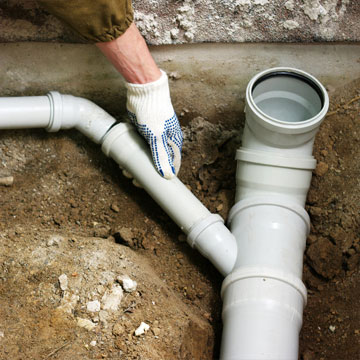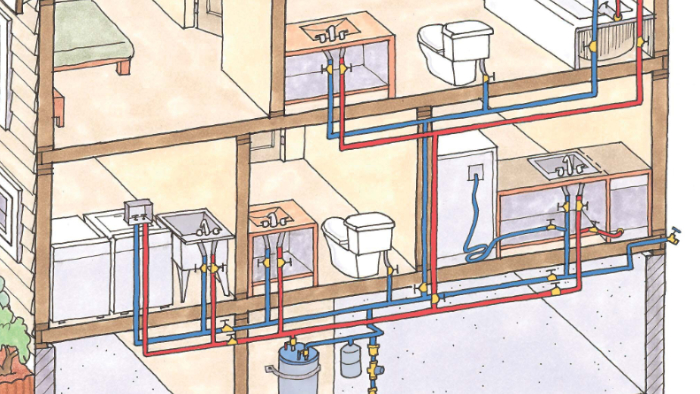How to Understand Your Property's Plumbing System Anatomy
How to Understand Your Property's Plumbing System Anatomy
Blog Article
This article down the page on the subject of The Inner Workings of Your Home's Plumbing is rather fascinating. Don't overlook it.

Recognizing exactly how your home's plumbing system functions is necessary for each homeowner. From delivering tidy water for drinking, cooking, and showering to safely getting rid of wastewater, a well-kept plumbing system is vital for your household's wellness and comfort. In this thorough guide, we'll check out the intricate network that makes up your home's pipes and offer ideas on upkeep, upgrades, and dealing with usual issues.
Introduction
Your home's pipes system is more than just a network of pipes; it's an intricate system that ensures you have accessibility to clean water and effective wastewater elimination. Recognizing its components and exactly how they interact can aid you prevent costly repair services and ensure whatever runs smoothly.
Standard Components of a Plumbing System
Pipes and Tubes
At the heart of your pipes system are the pipelines and tubing that bring water throughout your home. These can be constructed from various materials such as copper, PVC, or PEX, each with its advantages in terms of toughness and cost-effectiveness.
Components: Sinks, Toilets, Showers, and so on.
Components like sinks, toilets, showers, and bathtubs are where water is utilized in your house. Understanding how these fixtures link to the pipes system aids in detecting troubles and planning upgrades.
Valves and Shut-off Points
Valves manage the circulation of water in your pipes system. Shut-off shutoffs are vital throughout emergency situations or when you need to make repair work, enabling you to separate parts of the system without interrupting water circulation to the entire home.
Water System System
Key Water Line
The major water line attaches your home to the municipal water supply or a personal well. It's where water enters your home and is distributed to different components.
Water Meter and Stress Regulatory Authority
The water meter actions your water use, while a stress regulatory authority makes sure that water streams at a risk-free pressure throughout your home's plumbing system, preventing damages to pipelines and components.
Cold Water vs. Warm water Lines
Recognizing the difference in between cold water lines, which provide water straight from the primary, and warm water lines, which carry heated water from the water heater, helps in troubleshooting and planning for upgrades.
Water drainage System
Drain Pipes Water Lines and Traps
Drain pipes carry wastewater away from sinks, showers, and toilets to the sewer or septic system. Traps avoid sewer gases from entering your home and additionally catch particles that might trigger blockages.
Air flow Pipelines
Air flow pipes allow air right into the water drainage system, stopping suction that might slow drainage and create catches to empty. Proper ventilation is essential for keeping the stability of your pipes system.
Value of Proper Drain
Making certain correct drain stops back-ups and water damages. On a regular basis cleaning up drains pipes and keeping catches can avoid expensive repairs and extend the life of your pipes system.
Water Furnace
Kinds Of Hot Water Heater
Water heaters can be tankless or conventional tank-style. Tankless heating systems warmth water on demand, while tanks store warmed water for instant use.
Updating Your Pipes System
Reasons for Updating
Updating to water-efficient fixtures or replacing old pipelines can boost water high quality, decrease water bills, and raise the value of your home.
Modern Plumbing Technologies and Their Advantages
Explore technologies like clever leak detectors, water-saving toilets, and energy-efficient hot water heater that can save cash and lower environmental influence.
Cost Factors To Consider and ROI
Calculate the ahead of time prices versus long-lasting financial savings when considering plumbing upgrades. Many upgrades pay for themselves via decreased energy costs and fewer fixings.
Just How Water Heaters Link to the Pipes System
Comprehending exactly how hot water heater link to both the cold water supply and warm water circulation lines helps in detecting issues like inadequate hot water or leakages.
Maintenance Tips for Water Heaters
Routinely flushing your hot water heater to get rid of sediment, checking the temperature level setups, and inspecting for leaks can expand its lifespan and enhance power efficiency.
Typical Plumbing Issues
Leakages and Their Reasons
Leakages can occur because of maturing pipelines, loose fittings, or high water stress. Attending to leakages immediately prevents water damage and mold development.
Blockages and Blockages
Clogs in drains pipes and commodes are often caused by flushing non-flushable things or a build-up of grease and hair. Using drain screens and being mindful of what decreases your drains pipes can protect against obstructions.
Indicators of Plumbing Issues to Watch For
Low water stress, slow-moving drains pipes, foul odors, or abnormally high water expenses are indications of prospective plumbing issues that ought to be dealt with promptly.
Pipes Upkeep Tips
Routine Evaluations and Checks
Schedule yearly plumbing assessments to capture concerns early. Seek indications of leaks, corrosion, or mineral build-up in taps and showerheads.
Do It Yourself Upkeep Tasks
Straightforward jobs like cleansing tap aerators, checking for toilet leaks making use of dye tablet computers, or shielding subjected pipelines in cool environments can prevent significant pipes problems.
When to Call a Professional Plumber
Know when a pipes issue calls for expert know-how. Attempting complex repair work without proper knowledge can result in more damage and greater repair work costs.
Tips for Lowering Water Use
Easy behaviors like repairing leakages immediately, taking shorter showers, and running full loads of washing and recipes can save water and lower your energy bills.
Eco-Friendly Pipes Options
Consider lasting plumbing products like bamboo for floor covering, which is durable and environmentally friendly, or recycled glass for kitchen counters.
Emergency Preparedness
Actions to Take Throughout a Plumbing Emergency
Know where your shut-off shutoffs are located and how to switch off the supply of water in case of a ruptured pipe or major leakage.
Significance of Having Emergency Situation Get In Touches With Useful
Maintain call information for regional plumbing professionals or emergency solutions easily offered for quick feedback throughout a plumbing situation.
Environmental Effect and Preservation
Water-Saving Fixtures and Devices
Installing low-flow taps, showerheads, and toilets can considerably minimize water use without sacrificing efficiency.
DIY Emergency Fixes (When Relevant).
Short-term solutions like using duct tape to spot a dripping pipeline or placing a pail under a dripping faucet can lessen damage up until a specialist plumber gets here.
Verdict.
Understanding the anatomy of your home's pipes system encourages you to maintain it efficiently, saving time and money on repair work. By complying with routine maintenance regimens and remaining educated concerning modern-day pipes modern technologies, you can ensure your plumbing system operates effectively for many years to come.
HOW YOUR PLUMBING SYSTEM WORKS
Which Pipes Do What?
Blue lines = fresh water supply entering the building Red lines = hot water supply entering the building Grey lines = pipes carrying waste away from the building and venting pipes carrying gases away from the building (through the roof) YOUR MAIN PLUMBING SYSTEMS
There are two main plumbing systems that support your home s basic plumbing needs one that brings clean water into your home, and one that sends dirty water away from your home. Connected to the toilet, bath, shower, and other faucets in your home, these two systems keep your water flowing in the right directions.
ACCESSING FRESH WATER
Fresh and clean water is brought into your home through the main water supply line . Filtered through one pipe, this water is pressured to flow into the various fixtures in your home at any given time.
This water can be sourced from a well located on your property, a pond or river (mostly cottages), or, as in most cases, from the city s municipal water treatment centre. However, it is important to note that water that is untreated, such as the water siphoned from ponds or rivers, may not be safe to drink. Personal water supplies always need to be treated for hardness and contaminants before consumed.
MUNICIPAL WATER SUPPLIES
Improve taste and odour Remove sediment Eliminate hardness Reduce chlorine COLD WATER SUPPLY VS. HOT WATER SUPPLY
Cold water flows into your home or building through the service line, which then distributes hot or cold water to your fixtures. This line is most commonly run through a central column that runs floor to floor. Hot water runs in short and straight pipes as the longer the pipeline, the more heat that will be lost in the transfer. Having shorter pipes also allows residents to access hot water more quickly.
WASTE WATER SYSTEM
Your wastewater system is divided into two parts pipes that send wastewater away from your home and venting pipes that send sewer gas away from your home. Sewage water travels through pipes that flush the water and waste towards local sewers that are operated and managed by your city or town. Most sewer systems rely on gravity to move the wastewater to where it needs to go.
The further away from your toilet or sink, the larger wastewater pipes become. This allows for waste to be disposed of from various parts of your home or business at once without pipe blockages. The angle and flow of these pipes are also essential for keeping your waste pipes clear of build up.
https://harrisplumbing.ca/how-your-home-plumbing-system-works/

Hopefully you liked our topic on Understanding Your Home's Plumbing Anatomy. Many thanks for taking a few minutes to read through our blog. Liked our blog entry? Please share it. Help somebody else discover it. I appreciate reading our article about The Inner Workings of Your Home's Plumbing.
Click Here Report this page